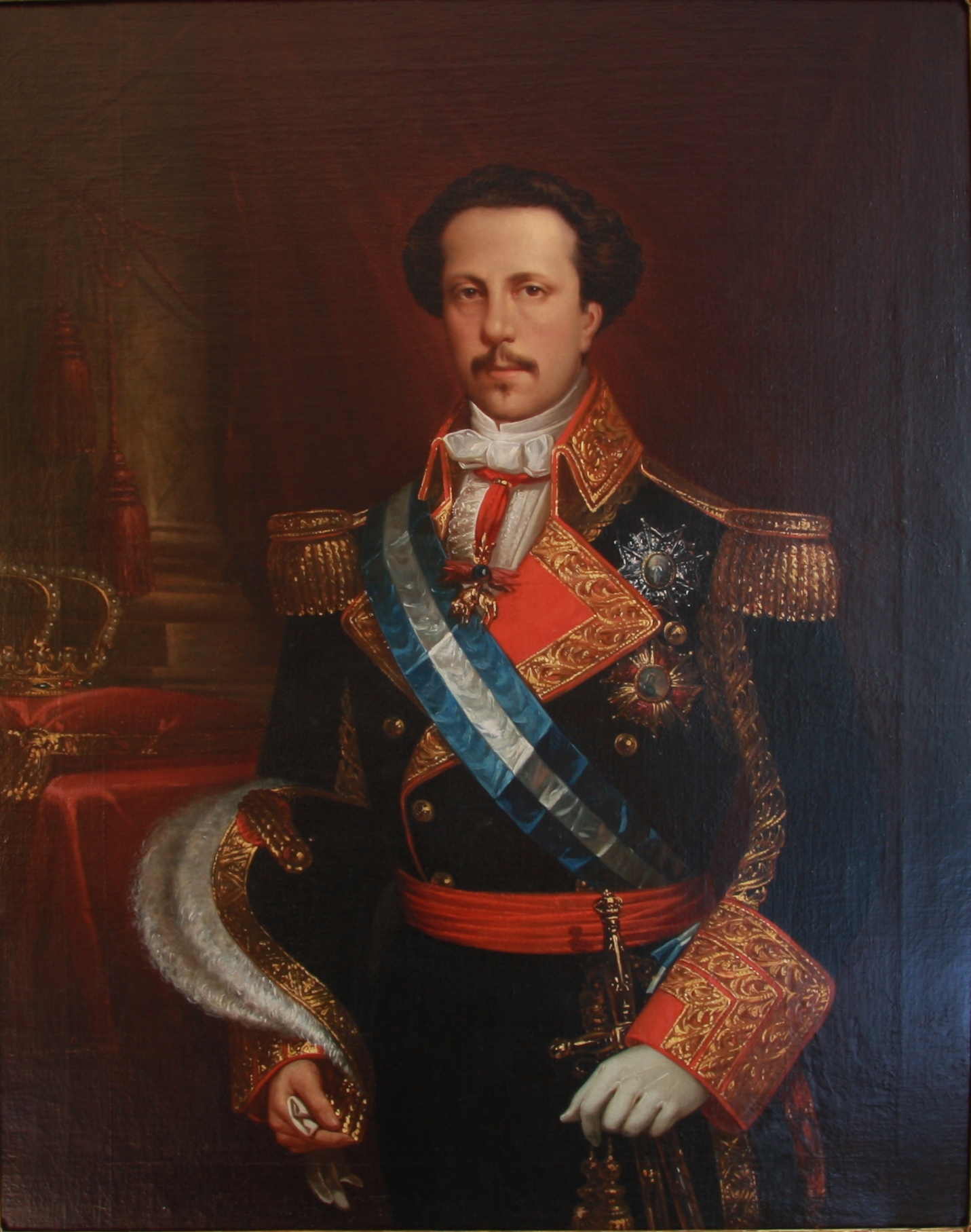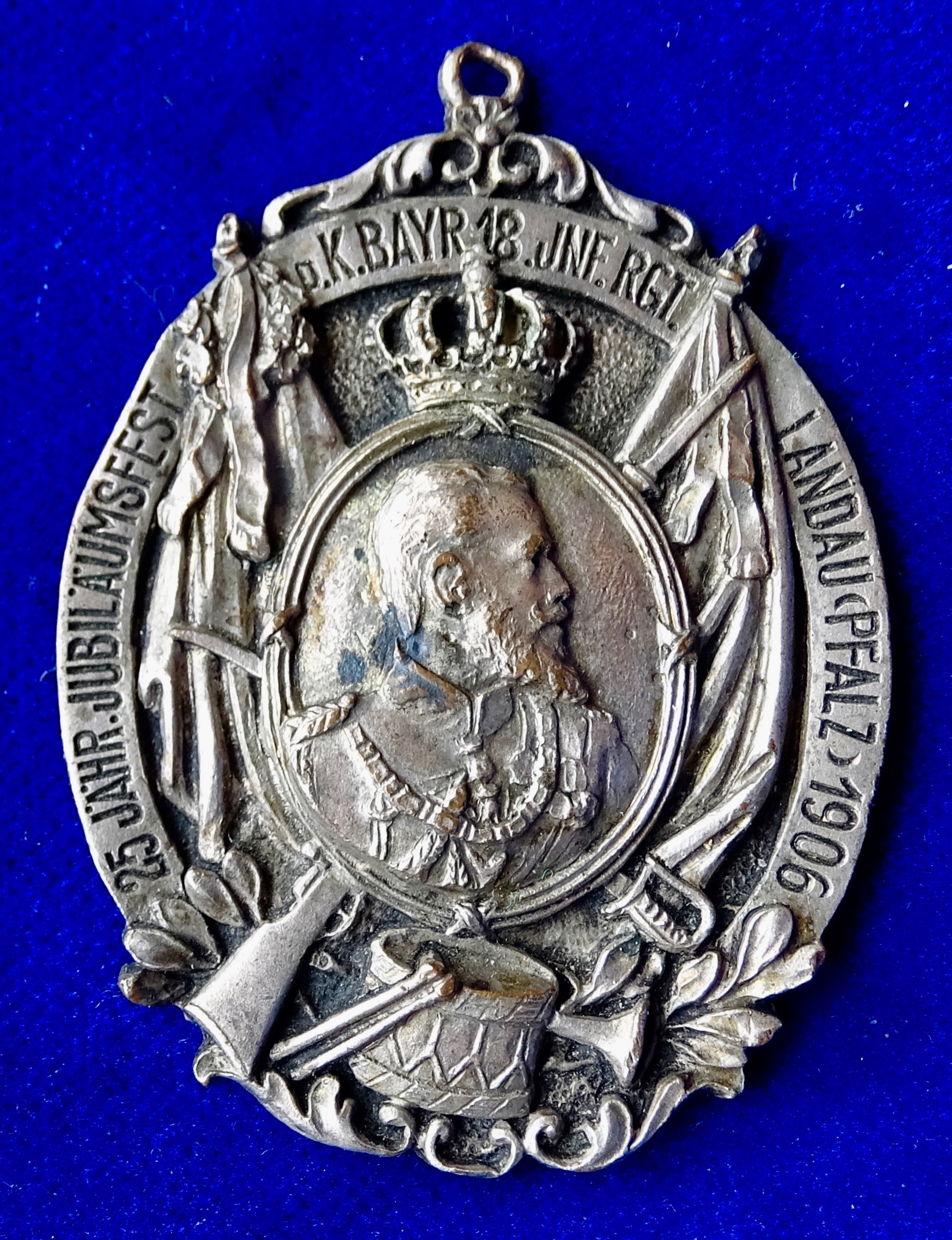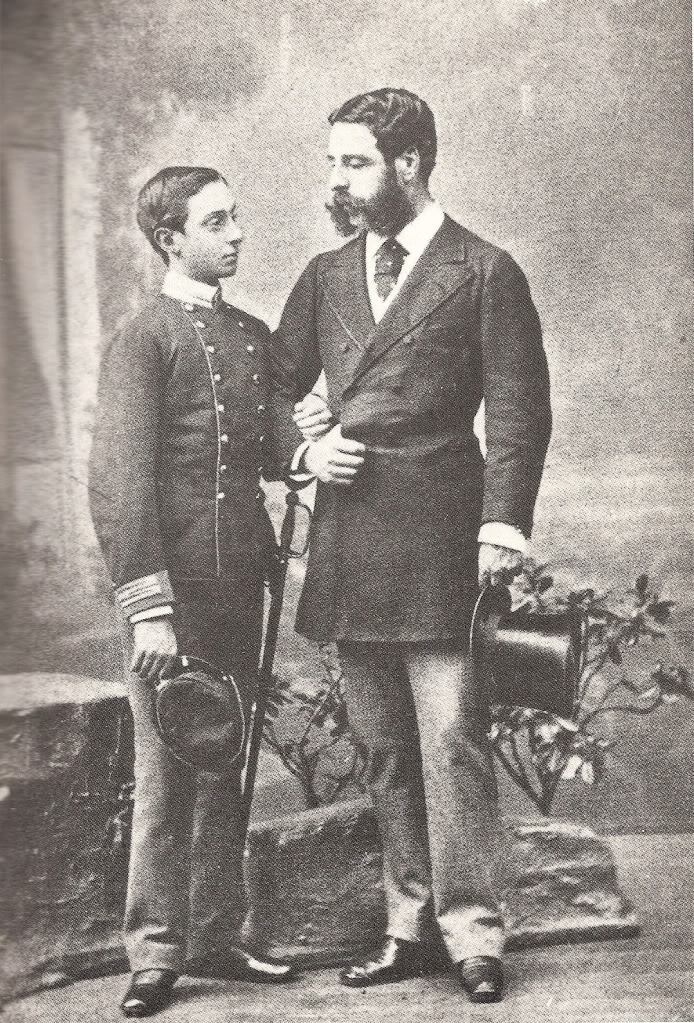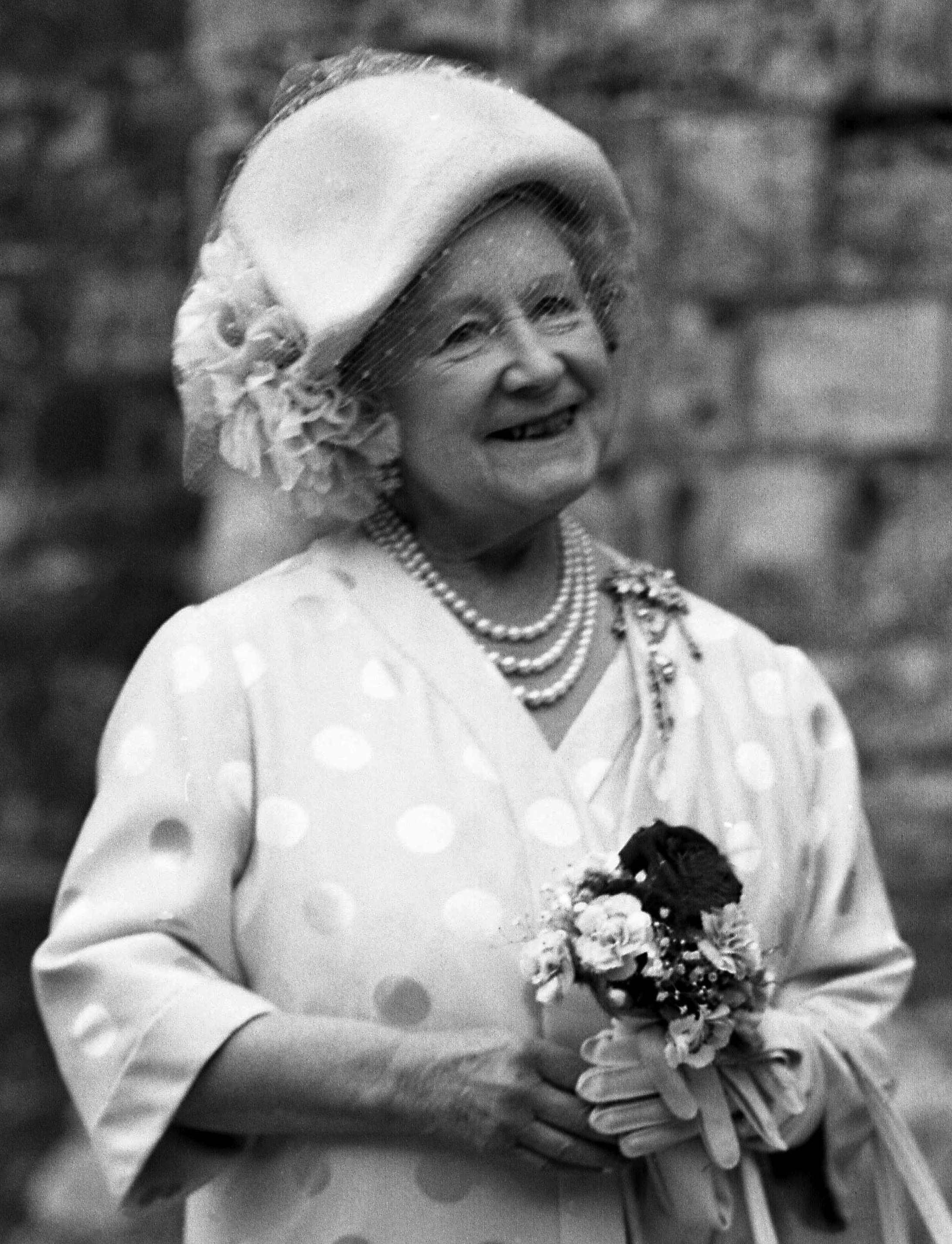|
Francisco De Asís, Duke Of Cádiz
Francisco de Asís, Duke of Cádiz (Francisco de Asís María Fernando de Borbón; 13 May 1822 – 17 April 1902), sometimes anglicised Francis of Assisi, was King consort of Spain as the husband of Queen Isabella II of Spain from their marriage on 10 October 1846 until Isabella was overthrown on 30 September 1868. He retained the style and title of king even after her abdication in favour of their son, Alfonso XII. His son was a king regnant, while Francisco himself was a king-father during the reign of the son. Family Francis was born at Aranjuez, Spain, the second son (first to survive infancy) of Infante Francisco de Paula of Spain, and of his wife (and niece), Princess Luisa Carlotta of the Two Sicilies. He was named after Saint Francis of Assisi. Marriage and children Francis married Isabella, his double first cousin, on 10 October 1846. There is evidence that Isabella would rather have married his younger brother, Infante Enrique, Duke of Seville, and complained bitt ... [...More Info...] [...Related Items...] OR: [Wikipedia] [Google] [Baidu] |
Duke Of Cádiz
The Dukedom of Cádiz is a title of Spanish nobility. Its name refers to the Andalusian city of Cádiz. History Rodrigo Ponce de León was a Castilian military leader who was granted the title of Duke of Cádiz in 1484. After the death of the first duke in 1492, the Catholic Monarchs negotiated with Francisca Ponce de León y de la Fuente regarding the abolition of the Marquisate and Duchy of Cádiz, reinstating the city and the titles to the crown after her death. For centuries, the title remained in abeyance, until the nineteenth century. Since then, the title was held by members of the Spanish branch of the House of Bourbon The House of Bourbon (, also ; ) is a European dynasty of French origin, a branch of the Capetian dynasty, the royal House of France. Bourbon kings first ruled France and Navarre in the 16th century. By the 18th century, members of the Spani .... The title is created by the Head of the Spanish State, Francisco Franco, in favor of Alfonso de Borb� ... [...More Info...] [...Related Items...] OR: [Wikipedia] [Google] [Baidu] |
Princess Luisa Carlotta Of The Two Sicilies
Luisa Carlotta of Naples and Sicily (Luisa Carlotta Maria Isabella; 24 October 1804 – 29 January 1844), was an Italian royal, who was an Infanta of Spain and a daughter of King Francis I of the Two Sicilies. Early life Luisa Carlotta was born at the Palace of Portici, the eldest child of King Francis I and of his wife, Infanta María Isabella of Spain. Her maternal grandparents were King Charles IV of Spain and Queen Maria Luisa of Spain. Luisa Carlotta had eleven younger siblings, including King Ferdinand II of the Two Sicilies. Princess of Spain On 12 June 1819 in Madrid, 14-year-old Luisa Carlotta married her maternal uncle Infante Francisco de Paula of Spain. He was ten years older than Luisa Carlotta. Luisa Carlotta played an important role during the sickness of Ferdinand VII to ensure that her niece, Isabella, became heiress to the Spanish throne instead of her uncle Carlos. She supported the new succession law issued by the king. When the king Ferdinand VII was su ... [...More Info...] [...Related Items...] OR: [Wikipedia] [Google] [Baidu] |
Infante Antonio, Duke Of Galliera
Infante Antonio, Duke of Galliera (Antonio Maria Luis Felipe Juan Florencio de Orleans y Borbón; 23 February 1866 – 24 December 1930), was a member of the Spanish and French royal families. He was the son of Antoine d'Orléans, Duke of Montpensier, and Infanta Luisa Fernanda of Spain. Infante Antonio was a grandson of King Louis Philippe I of France on his father's side and King Ferdinand VII of Spain on his mother's side. Early life Antonio was the only surviving son of Prince Antoine of Orléans, Duke of Montpensier, and his wife Infanta Luisa Fernanda of Spain. Through his father, he was a grandson of King Louis Philippe of the French and his wife Princess Maria Amalia of the Two Sicilies. Through his mother, he was a grandson of King Ferdinand VII of Spain and his wife Princess Maria Christina of the Two Sicilies. Antonio was born in Seville, shortly before the end of the reign of his aunt Queen Isabella II of Spain. Due to the Glorious Revolution of 1868 which ch ... [...More Info...] [...Related Items...] OR: [Wikipedia] [Google] [Baidu] |
Prince Louis Ferdinand Of Bavaria
es, Luis Fernando María Carlos Enrique Adalberto Francisco Felipe Andrés Constantín , image = ludwigferdinandofbavaria.jpg , caption = Prince Ludwig Ferdinand in 1906 , spouse = , house = Wittelsbach , father = Prince Adalbert of Bavaria , mother = Infanta Amalia of Spain , birth_date = , birth_place = Madrid, Spain , death_date = , death_place = Munich,West Germany , place of burial = Michaelskirche, Munich , issue = Prince Ludwig Ferdinand Maria Karl Heinrich Adalbert Franz Philipp Andreas Konstantin of Bavaria (22 October 1859 – 23 November 1949) was a member of the Bavarian House of Wittelsbach and a General of Cavalry. Following his marriage to Infanta María de la Paz of Spain, he was also created an Infante of Spain. General information He was the eldest son of Prince Adalbert of Bavaria (1828–75) and Infanta Amalia of Spain (1834–1905). He was a paternal grands ... [...More Info...] [...Related Items...] OR: [Wikipedia] [Google] [Baidu] |
Alfonso XII Of Spain
Alfonso XII (Alfonso Francisco de Asís Fernando Pío Juan María de la Concepción Gregorio Pelayo; 28 November 185725 November 1885), also known as El Pacificador or the Peacemaker, was King of Spain from 29 December 1874 to his death in 1885. After a revolution that deposed his mother Isabella II from the throne in 1868, Alfonso studied in Austria and France. His mother abdicated in his favour in 1870, and he returned to Spain as king in 1874 following a military coup against the First Republic. Alfonso died aged 27 in 1885, and was succeeded by his son, Alfonso XIII, who was born the following year. He is the most recent monarch of Spain to have died while on the throne. Political background, early life and paternity Alfonso was born in Madrid as the eldest son of Queen Isabella II on 28 November 1857. His official father, Isabella's husband Francisco de Asís, has been generally viewed as effeminate, impotent or homosexual, leading writers to question his biological p ... [...More Info...] [...Related Items...] OR: [Wikipedia] [Google] [Baidu] |
Prince Gaetan, Count Of Girgenti
, title = Count of Girgenti , image = Cayetano de las Dos Sicillias.jpg , caption = , succession = , spouse = , issue = , house = Bourbon-Two Sicilies , father = Ferdinand II of the Two Sicilies , mother = Maria Theresa of Austria , birth_date = , birth_place = Naples, Kingdom of the Two Sicilies , death_date = , death_place = Lucerne, Switzerland , burial_place = El Escorial, Madrid, Spain , religion = Roman Catholic Prince Gaetan of the Two Sicilies, Count of Girgenti ( it, Gaetano Marie Federico, Principe di Borbone delle Due Sicilie, Conte di Girgenti) (12 January 1846, Naples, Two Sicilies – 26 November 1871, Lucerne, Switzerland) was the seventh child of Ferdinand II of the Two Sicilies and his wife Maria Theresa of Austria. Gaetan was a member of the House of Bourbon-Two Sicilies and consort to Isabella, Princess of Asturias, twice the recognized heir presumptive to the throne of Spain ... [...More Info...] [...Related Items...] OR: [Wikipedia] [Google] [Baidu] |
Real Academia De Bellas Artes De Santa Isabel De Hungría
The Real Academia de Bellas Artes de Santa Isabel de Hungría (''Royal Academy of Fine Arts of Saint Isabel of Hungary'') is located in the Casa de los Pinelo, Casa-Palacio de los Pinelo in central Seville, Spain. It is divided into six sections: Architecture, Sculpture, Painting, Music, Archaeology, Decorative Arts and Performing and Audiovisual Arts. It was founded in 1660. Notable members include; Ana María Vicent Zaragoza, Andrés Rossi, José Hernández and Pepi Sánchez. References External links *— Museums in Seville Art museums and galleries in Spain Decorative arts museums in Spain Organisations based in Spain with royal patronage {{Spain-museum-stub ... [...More Info...] [...Related Items...] OR: [Wikipedia] [Google] [Baidu] |
Infante Enrique, Duke Of Seville
, house = Bourbon , father =Infante Francisco de Paula of Spain , mother =Princess Luisa Carlotta of the Two Sicilies , birth_date = , birth_place =Seville, Spain , death_date = , death_place =Madrid, Kingdom of Spain , burial_place=San Isidro Cemetery Infante Enrique, 1st Duke of Seville ( es, Infante Enrique María Fernando Carlos Francisco Luis de Borbón y Borbón-Dos Sicilias, Duque de Sevilla; 17 April 182312 March 1870), was an Infante of Spain and a member of the Spanish branch of the House of Bourbon. He was the grandson of Charles IV of Spain and became the first Duke of Seville in 1823. He was known for his progressive, even revolutionary, ideas during the reign of his double first cousin and sister-in-law, Isabella II of Spain. Early life Infante Enrique was born at Seville, Spain, the fourth child and second son of Infante Francisco de Paula of Spain (1794–1865; son of Charles IV of Spain and Princess Maria Luisa of Parma) and his wif ... [...More Info...] [...Related Items...] OR: [Wikipedia] [Google] [Baidu] |
Cousin
Most generally, in the lineal kinship system used in the English-speaking world, a cousin is a type of familial relationship in which two relatives are two or more familial generations away from their most recent common ancestor. Commonly, "cousin" refers to a first cousin – a relative of the same generation whose most recent common ancestor with the subject is a grandparent. Degrees and removals are separate measures used to more precisely describe the relationship between cousins. ''Degree'' measures the separation, in generations, from the most recent common ancestor(s) to a parent of one of the cousins (whichever is closest), while ''removal'' measures the difference in generations between the cousins themselves, relative to their most recent common ancestor(s). To illustrate usage, a second cousin is a cousin with a ''degree'' of two; there are three (not two) generations from the common ancestor(s). When the degree is not specified, first cousin is assumed. A cou ... [...More Info...] [...Related Items...] OR: [Wikipedia] [Google] [Baidu] |
Francis Of Assisi
Giovanni di Pietro di Bernardone, better known as Saint Francis of Assisi ( it, Francesco d'Assisi; – 3 October 1226), was a mystic Italian Catholic friar, founder of the Franciscans, and one of the most venerated figures in Christianity. He was inspired to lead a life of poverty and itinerant preaching. Pope Gregory IX canonized him on 16 July 1228. He is usually depicted in a robe with a rope as belt. In 1219, he went to Egypt in an attempt to convert the sultan al-Kamil and put an end to the conflict of the Fifth Crusade. In 1223, he arranged for the first Christmas live nativity scene. According to Christian tradition, in 1224 he received the stigmata during the apparition of a Seraphic angel in a religious ecstasy. He founded the men's Order of Friars Minor, the women's Order of St. Clare, the Third Order of St. Francis and the Custody of the Holy Land. Once his community was authorized by the Pope, he withdrew increasingly from external affairs. Fr ... [...More Info...] [...Related Items...] OR: [Wikipedia] [Google] [Baidu] |
Queen Mother
A queen mother is a former queen, often a queen dowager, who is the mother of the monarch, reigning monarch. The term has been used in English since the early 1560s. It arises in hereditary monarchy, hereditary monarchies in Europe and is also used to describe a number of similar yet distinct monarchical concepts in non-European cultures around the world. " Queen Mother" usually, in English, refers to Queen Elizabeth The Queen Mother (queen consort, 1936–1952; queen mother, 1952–2002), who was the mother of Elizabeth II, Queen Elizabeth II and one of the few people to use the term as an official style. However, it is also used as an official title in Thailand where Sirikit, the mother of the present king, is officially styled "The Queen Mother". Status A queen mother is often a queen dowager, a widow of a king, who is simultaneously a former queen consort and the mother of the current monarch. As there is only one monarch, there can only be one queen mother. It is unclear i ... [...More Info...] [...Related Items...] OR: [Wikipedia] [Google] [Baidu] |
Queen Isabella II Of Spain
Isabella II ( es, Isabel II; 10 October 1830 – 9 April 1904), was Queen of Spain from 29 September 1833 until 30 September 1868. Shortly before her birth, the King Ferdinand VII of Spain issued a Pragmatic Sanction to ensure the succession of his firstborn daughter, due to his lack of a son. She came to the throne a month before her third birthday, but her succession was disputed by her uncle the Infante Carlos (founder of the Carlist movement), whose refusal to recognize a female sovereign led to the Carlist Wars. Under the regency of her mother, Spain transitioned from an absolute monarchy to a constitutional monarchy, adopting the Royal Statute of 1834 and Constitution of 1837. Her effective reign was a period marked by palace intrigues, back-stairs and antechamber influences, barracks conspiracies, and military '' pronunciamientos''. She was deposed in the Glorious Revolution of 1868, and formally abdicated in 1870. Her son, Alfonso XII, became king in 1874. Bi ... [...More Info...] [...Related Items...] OR: [Wikipedia] [Google] [Baidu] |

.jpg)







